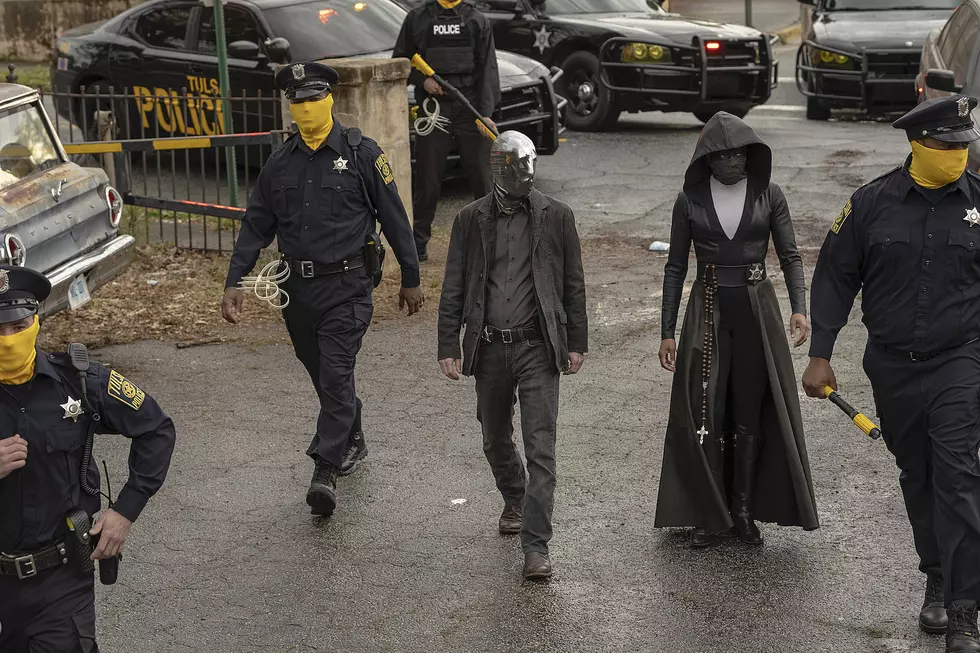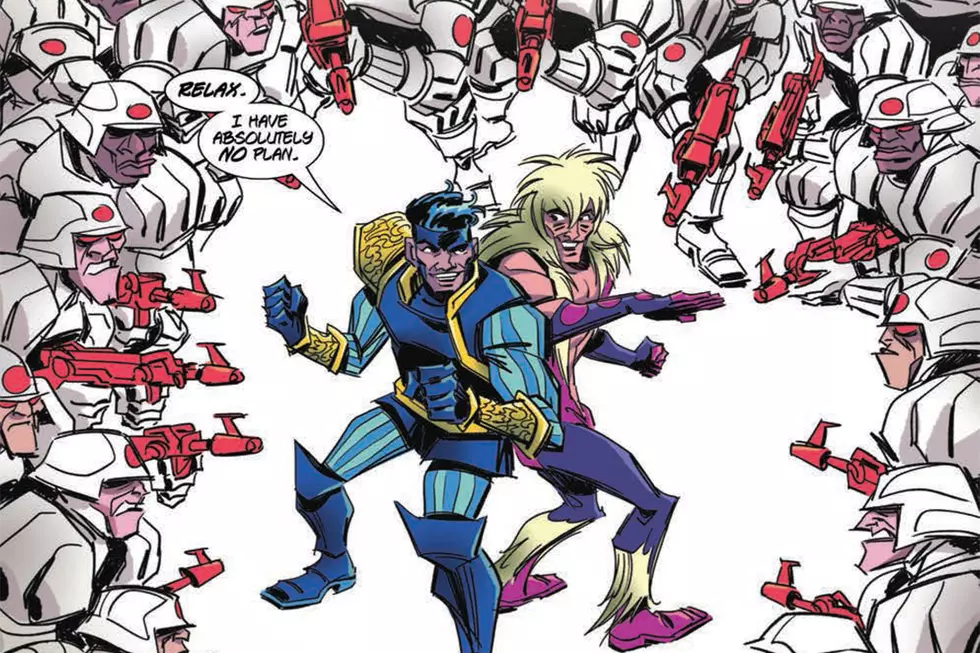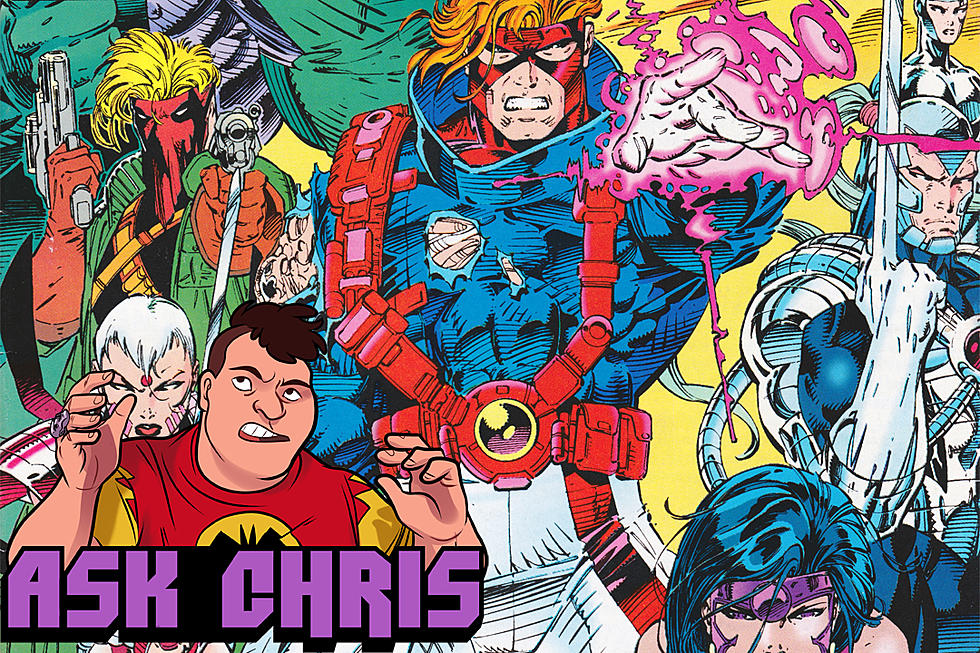
Alan Moore And ‘Before Watchmen’ Creators Comment On The Ethics Of ‘Watchmen’ Prequel

"Completely shameless" is what comics writer Alan Moore had to say about DC Comics' announcement of Before Watchmen, an ambitious programme of prequel miniseries based on Moore and Dave Gibbons' hugely popular and influential graphic novel, Watchmen. For his part, Watchmen artist Dave Gibbons was more forgiving. He and the principals of Before Watchmen, including DC Comics Co-Publishers Dan DiDio and Jim Lee, have been making the media rounds throughout the morning. Many of their remarks explicitly acknowledge the controversy built into the nature of this publishing initiative, although some disagree with Moore and other commentators' estimations of the morality in play.
A 1987 opus about cold war era superhero outlaws embroiled in a murder mystery whose implications connect them to doomsday itself, Watchmen is considered sacrosanct by readers. The work is also notable for its role in divorcing Moore from DC over issues pertaining to ownership, issues that in the 25 years since its original publication have made Watchmen just as much an industry contract parable as a revered work of literature.
Speaking with The New York Times about Before Watchmen, Moore, who is entitled to royalties on printings of Watchmen and its exploitation in other media, said, "I don't want money. I want this not to happen."
"I tend to take this latest development as a kind of eager confirmation that they are still apparently dependent on ideas that I had 25 years ago," said Moore, also the writer of the acclaimed League of Extraordinary Gentlemen, Lost Girls and Swamp Thing. "As far as I know, there weren't that many prequels or sequels to Moby-Dick." The writer also said the Before Watchmen news reminds him of the "draconian contracts" he signed with DC at the time.
In a statement published by DC's The Source blog, Dave Gibbons had this to say about Before Watchmen:
The original series of WATCHMEN is the complete story that Alan Moore and I wanted to tell. However, I appreciate DC's reasons for this initiative and the wish of the artists and writers involved to pay tribute to our work. May these new additions have the success they desire.
DC Comics Co-Publishers Dan DiDio and Jim Lee, via The Source:
"It's our responsibility as publishers to find new ways to keep all of our characters relevant," said DC Entertainment Co-Publishers Dan DiDio and Jim Lee. "After twenty five years, the Watchmen are classic characters whose time has come for new stories to be told. We sought out the best writers and artists in the industry to build on the complex mythology of the original."
Before Watchmen: Rorschach writer Brian Azzarello, via USA Today:
[What's key is] "that we all get in there and we tell the best possible stories we can and we reconnect these characters. It's 25 years later. Let's make them vital again."
Before Watchmen: Minutemen and Before Watchmen: Silk Spectre writer Darwyn Cooke, via LA Times Hero Complex:
"The nature of the undertaking is going to polarize a lot of the readership," said Cooke, the Canadian writer-artist whose six-issue "Before Watchmen" title is called "Minutemen." "I think a lot of people will be excited about this and there are a lot of people that will be dead against it."
"I don't feel any more trepidation than Alan [Moore] did by refitting the Charlton characters," Cooke said. "It feels like the right time and the right place and I think I have a strong idea."
Before Watchmen: Dr. Manhattan and Before Watchmen: Nite Owl writer J. Michael Straczynski, via The Hollywood Reporter:
The perception that these characters shouldn't be touched by anyone other than Alan is both absolutely understandable and deeply flawed. As good as these characters are – and they are very good indeed – one could make the argument, based on durability and recognition, that Superman is the greatest comics character ever created. But I don't hear Alan or anyone else suggesting that no one other than Shuster and Siegel should have been allowed to write Superman. Certainly Alan himself did this when he was brought on to write Swamp Thing, a seminal comics character created by Len Wein.
Leaving aside the fact that the Watchmen characters were variations on pre-existing characters created for the Charleton Comics universe, it should be pointed out that Alan has spent most of the last decade writing very good stories about characters created by other writers, including Alice (from Alice in Wonderland), Dorothy (from Wizard of Oz), Wendy (from Peter Pan), as well as Captain Nemo, the Invisible Man, Jeyll and Hyde, and Professor Moriarty (used in the successful League of Extraordinary Gentlemen). I think one loses a little of the moral high ground to say, "I can write characters created by Jules Verne, H.G. Wells, Robert Louis Stevenson, Arthur Conan Doyle and Frank Baum, but it's wrong for anyone else to write my characters."
The whole point of having great characters is the opportunity to explore them more deeply with time, re-interpreting them for each new age. That DC allowed these characters to sit on a shelf for over two decades as a show of respect is salutary, but there comes a time when good characters have to re-enter the world to teach us something about ourselves in the present.
Before Watchmen: Ozymandius writer Len Wein, via Wired:
"As far as I know there are no plans for more books after this, but 25 years ago there were no plans for these books, so who truly knows?" asked Wein. "I think reboots are almost mandatory in an industry that has existed for over three-fourths of a century now. The need to inject new blood, new ideas, new approaches, is the only thing that keeps our readers coming back for more."
Brian Azzarello, via The New York Times:
"I think the gut reaction is going to be, 'Why?' " Mr. Azzarello said in a telephone interview. "But then when the actual books come out, the answer will be, 'Oh, that's why.'"
J. Michael Straczynski, via Comic Book Resources:
We are all being very meticulous in how we tie in the events of our stories with the original "Watchmen." The first time we all met secretly in New York to discuss all this, we kept copies of "Watchmen" close at hand and whenever a question was raised about what happened to whom and when, we'd flip through looking for the slightest clue. I joked at the time that it looked like Saturday afternoon Bible Study.
I was very careful to stay within the parameters of what Alan created for Dr. Manhattan. But at the same time, you need the elbow room to create a story worth telling, which means something new has to be created. In this case, it came through looking at what Alan had done and asking the next logical question within that framework. As one example: it's always bothered me that someone as brilliant and precise about time as Jon could just blithely walk into the intrinsic field test chamber as the time-lock closed. He'd know better than that. But since it did happen, you now have to say, "Okay, that being the case, how did it happen? Is there something we don't know? Or more to the point, was there something he didn't know?"
Before Watchmen: The Curse of the Crimson Corsair artist John Higgins, via The Huffington Post:
"The challenge is to make the stories modern and relevant to 2012 and to show what can be done with respect and consideration for the source material that has inspired so many people over the years. By adding to the mythos and not to detract from it," he said. "'The Watchmen' had such an influence on graphic storytelling since it first appeared and is a timeless classic. If we can create a new set of stories that can be enjoyed 25 years on, that would be an achievement and a reward in itself."
More From ComicsAlliance









